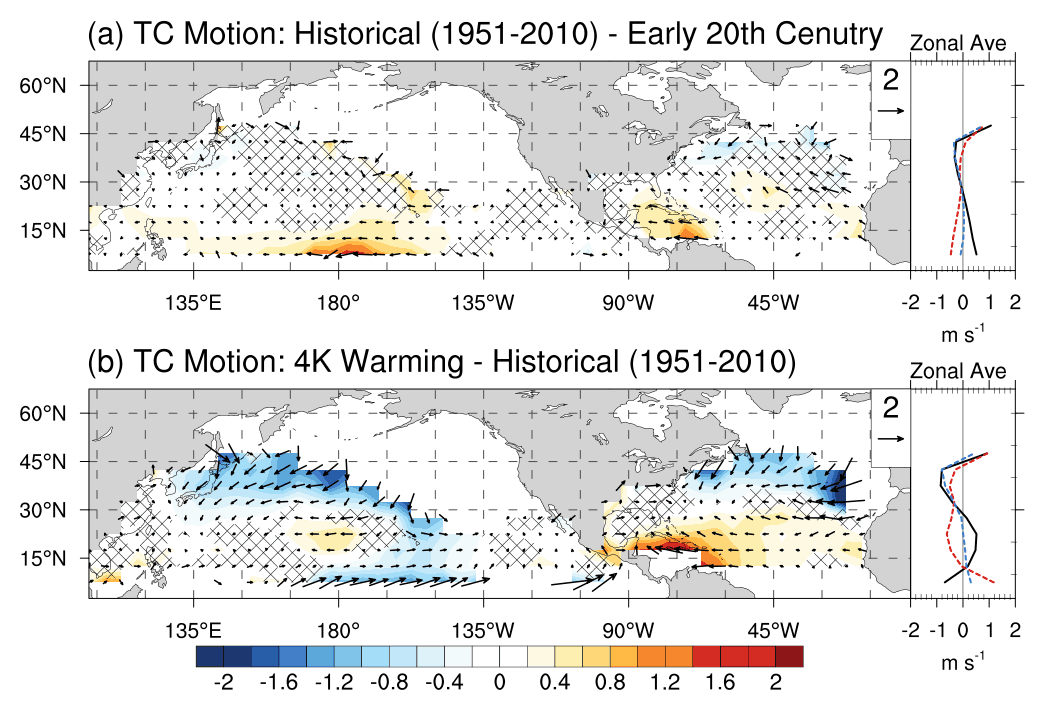April 22nd, 2020
Key Findings
- Future anthropogenic warming could lead to a significant slowing of hurricane motion, including some populated mid-latitude regions
- The observed global slowdown of hurricane motion cannot be easily linked to anthropogenic climate change
- The authors find a link to model-projected changes in the extratropical circulation — to date, rarely connected to future changes of hurricane activity
Gan Zhang, Hiroyuki Murakami, Thomas Knutson, Ryo Mizuta, and Kohei Yoshida. Science Advances. DOI: 10.1126/sciadv.aaz7610
There is intense public and scientific interest in the question of whether slowly moving and highly destructive hurricanes, such as Harvey (2017), Florence (2018), and Dorian (2019), could become much more common with climate change. Using high-resolution large ensemble simulations, the authors investigated whether future anthropogenic warming could lead to a significant slowing of hurricane motion, and whether the observed trends of hurricane motion during past decades could be attributed to anthropogenic forcing.
These results suggest that future anthropogenic warming could lead to a significant slowing of hurricane motion, including some populated mid-latitude regions (e.g., Japan), where such threats may not be intuitively expected. This slowing of hurricane motion is linked to a poleward shift of the mid-latitude westerlies and a weakening of weather perturbations between the mid-latitude westerlies and the tropics. These extratropical changes are relatively robustly projected by most climate models but have, to date, rarely been connected to future changes of hurricane activity. The slowing of hurricane motion is not only evident over the open ocean but also appears in proximity to some populated coastal regions, including the northeastern United States and Japan. On the other hand, this study also presents evidence suggesting that the observed global slowdown of hurricane motion highlighted by Kossin (2018, Nature) cannot be easily linked to anthropogenic climate change.

a) TC motion differences between the historical (1951–2010) experiment and the early twentieth-century experiment.
b) TC motion differences between the 4-K warming experiment and the historical (1951–2010) experiment.
Color shading in the left panels depicts differences in translation speed. Hatching indicates differences are not significant at the 0.05 significance level as determined using a two-sided Student’s t-test. The right panels show the zonally averaged changes of speed magnitude (black), zonal component (red), and meridional component (blue) of TC motion.


